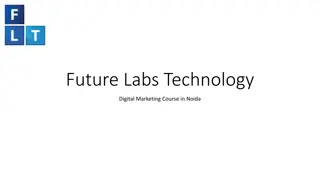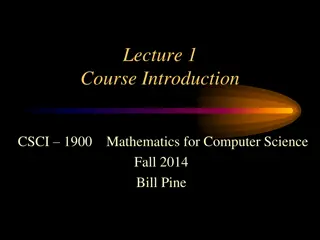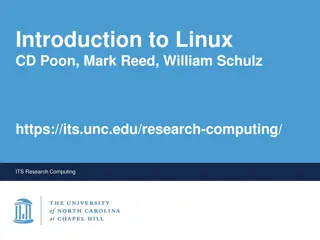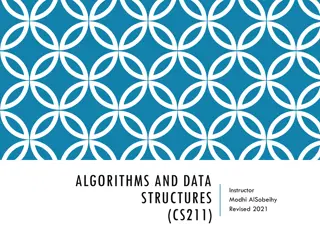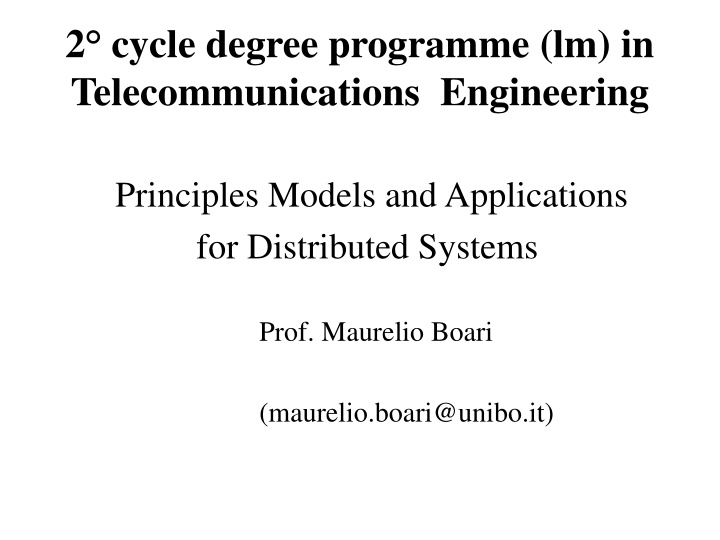
Advanced Telecommunications Engineering Principles and Distributed Systems Applications
This 2-cycle degree programme in Telecommunications Engineering focuses on knowledge related to computer networks, distributed systems, and technologies essential for their management. Topics covered include the basics of hardware and software architecture, operating system functions, process management, and more. The course explores the limitations of the web model, the evolution of internet interactions, and the importance of applications integration in various scenarios.
Download Presentation

Please find below an Image/Link to download the presentation.
The content on the website is provided AS IS for your information and personal use only. It may not be sold, licensed, or shared on other websites without obtaining consent from the author. If you encounter any issues during the download, it is possible that the publisher has removed the file from their server.
You are allowed to download the files provided on this website for personal or commercial use, subject to the condition that they are used lawfully. All files are the property of their respective owners.
The content on the website is provided AS IS for your information and personal use only. It may not be sold, licensed, or shared on other websites without obtaining consent from the author.
E N D
Presentation Transcript
2 cycle degree programme (lm) in Telecommunications Engineering Principles Models and Applications for Distributed Systems Prof. Maurelio Boari (maurelio.boari@unibo.it)
Learning outcomes Knowledge related to the technologies needed for management and usage of computer networks and distributed systems
computer Data Local terminals base 3
word wide web (www) In the past years the www had a very large success basically for two reasons: - Simplicity - Ubiquity For a service provider is simple to contact a great number of users. . For a user is simple to access a service everywhere it is located. However, www is strongly oriented to the interaction among users and systems.
Interaction among distributed computing applications The evolution of the internet and web utilization made necessary the demand of interactions among applications in different scenarios: A program of business management must be able to integrate the local informations with those made available on Internet by suppliers, banks or public administrations. An application used by estate agents must access real time informations caming from wordwide finantial markets. The library managent system can look for a book either in the local catalog or in those of a larger library management system (University, local goverment, )
Web limitations The web model is not suitable to the management of the interactions among applications. It is based on a very simple model: - the user, using a browser, sends a URL to a server. - the web server returns a HTML page that is graphically displayed by the browser. In a interaction between two applications this scheme presents two critical aspects: The URL are a very simple tool in order to express complex and articulated requests. HTML is a language basically used to describe how documents may be displayed.
Course contents 1.Basic elements of the hardware and software architecture of a network node. -Operating system objectives and functions. - Process description and control - Process management: scheduling, resources and protection -Process classification: independent/cooperating, share memory message passing communication/competition/ interference - threads (multithreading).
2. Network communication: methods and tools - Overview - Distributed and heterogenous systems - Client/server and peer-to-peer models. - Cloud computing - Sockets - RPC and RMI - web services technology -XML language
3. Network security - attacks to network security - criptography and network security - encryption :classical and modern techniques -digital signature and authentication protocols - electronic mail security - web security
Recommended reading W. Stallings: Operating Systems . Prentice Hall, fourth edition ,2001 Douglas Comer : " Computer networs and Internet", Addison-Wesley,2000. . Pfleeger, Pfleeger: " Security in Computing"Prentice Hall, 2004 A.S. Tanenbaum: Computer Networks Prentice Hall, 1996
Teaching methods class lessons and lab( Java language, communication tools implementation) Assessment methods oral proof concerning the arguments examined in the course (including Java and tools implementation by Java). Office hours . Tuesday, 15-17 (also by e-mail)
Network node - Hardware : server. CPU, main memory, mass memory , I/O devices - Software: base software, application software - Base software: compiler, interpreter , editor, operating system, protocols








